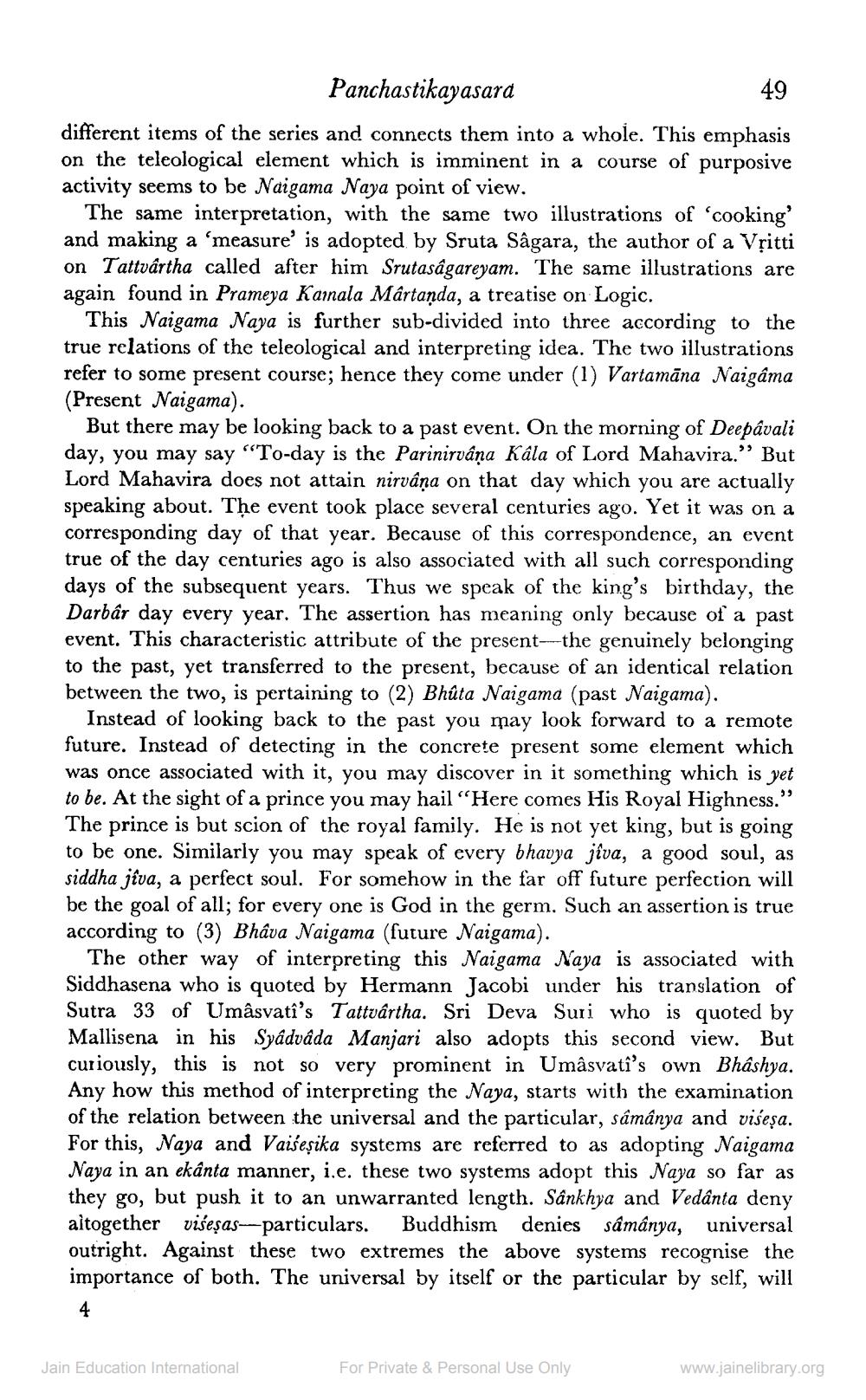________________
Panchastikayasard
49 different items of the series and connects them into a whole. This emphasis on the teleological element which is imminent in a course of purposive activity seems to be Naigama Naya point of view.
The same interpretation, with the same two illustrations of 'cooking' and making a 'measure' is adopted by Sruta Sâgara, the author of a Vșitti on Tattvartha called after him Srutaságareyam. The same illustrations are again found in Prameya Kannala Mârtanda, a treatise on Logic.
This Naigama Naya is further sub-divided into three according to the true relations of the teleological and interpreting idea. The two illustrations refer to some present course; hence they come under (1) Vartamāna Naigama (Present Naigama).
But there may be looking back to a past event. On the morning of Deepavali day, you may say "To-day is the Parinirvana Kala of Lord Mahavira.” But Lord Mahavira does not attain nirvana on that day which you are actually speaking about. The event took place several centuries ago. Yet it was on a corresponding day of that year. Because of this correspondence, an event true of the day centuries ago is also associated with all such corresponding days of the subsequent years. Thus we speak of the king's birthday, the Darbâr day every year. The assertion has meaning only because of a past event. This characteristic attribute of the present--the genuinely belonging to the past, yet transferred to the present, because of an identical relation between the two, is pertaining to (2) Bhúta Naigama (past Naigama).
Instead of looking back to the past you may look forward to a remote future. Instead of detecting in the concrete present some element which was once associated with it, you may discover in it something which is yet to be. At the sight of a prince you may hail “Here comes His Royal Highness." The prince is but scion of the royal family. He is not yet king, but is going to be one. Similarly you may speak of every bhavya jîva, a good soul, as siddha jîva, a perfect soul. For somehow in the far off future perfection will be the goal of all; for every one is God in the germ. Such an assertion is true according to (3) Bhava Naigama (future Naigama).
The other way of interpreting this Naigama Naya is associated with Siddhasena who is quoted by Hermann Jacobi under his translation of Sutra 33 of Umâsvati's Tattvartha. Sri Deva Suri who is quoted by Mallisena in his Syadváda Manjari also adopts this second view. But curiously, this is not so very prominent in Umâsvati's own Bhashya. Any how this method of interpreting the Naya, starts with the examination of the relation between the universal and the particular, sâmânya and višeșa. For this, Naya and Vaišeșika systems are referred to as adopting Naigama Naya in an ekânta manner, i.e. these two systems adopt this Naya so far as they go, but push it to an unwarranted length. Sankhya and Vedânta deny altogether viseşas--particulars. Buddhism denies sâmânya, universal outright. Against these two extremes the above systems recognise the importance of both. The universal by itself or the particular by self, will
Jain Education International
For Private & Personal Use Only
www.jainelibrary.org




